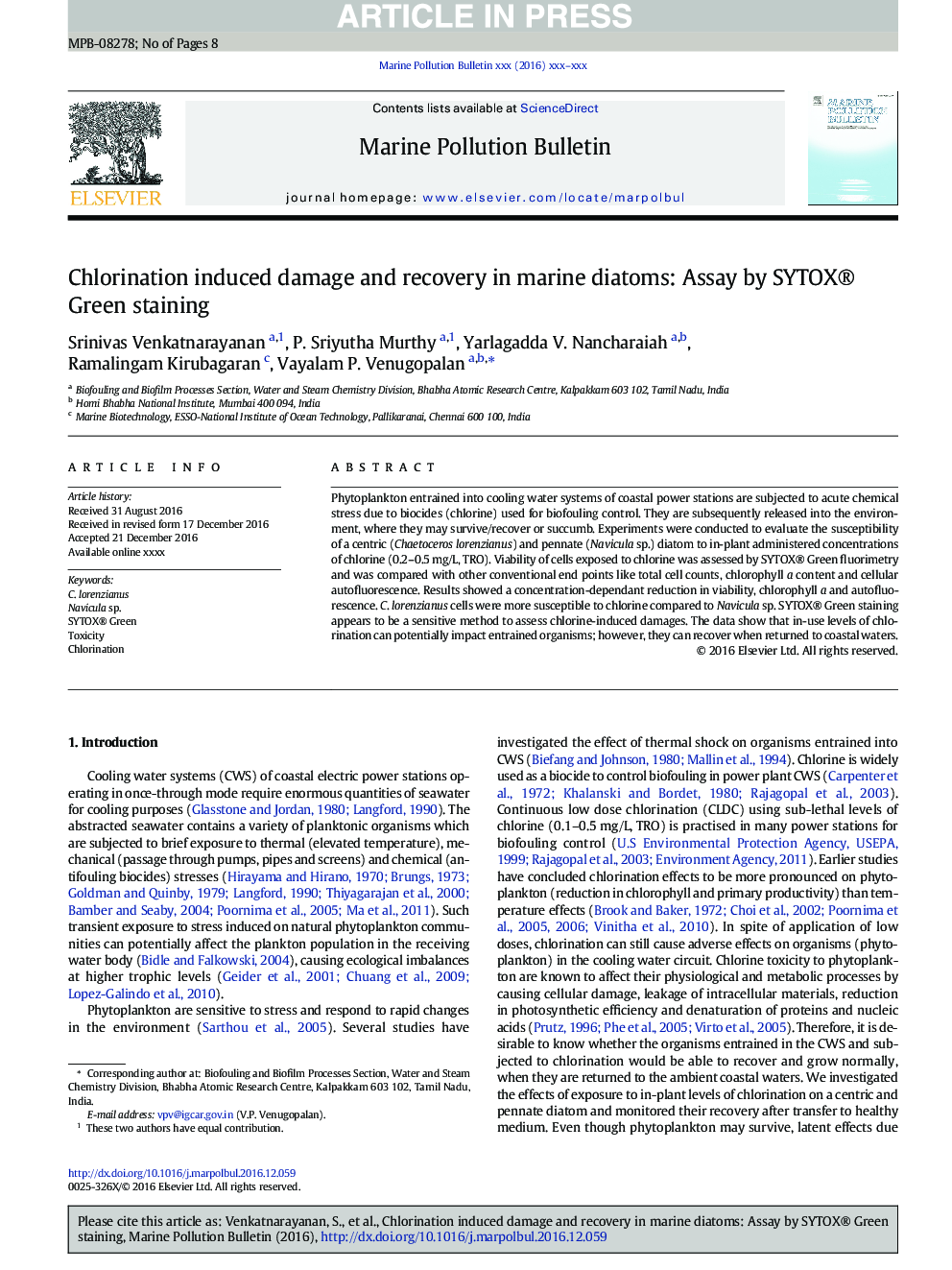| Article ID | Journal | Published Year | Pages | File Type |
|---|---|---|---|---|
| 8872254 | Marine Pollution Bulletin | 2017 | 8 Pages |
Abstract
Phytoplankton entrained into cooling water systems of coastal power stations are subjected to acute chemical stress due to biocides (chlorine) used for biofouling control. They are subsequently released into the environment, where they may survive/recover or succumb. Experiments were conducted to evaluate the susceptibility of a centric (Chaetoceros lorenzianus) and pennate (Navicula sp.) diatom to in-plant administered concentrations of chlorine (0.2-0.5Â mg/L, TRO). Viability of cells exposed to chlorine was assessed by SYTOX® Green fluorimetry and was compared with other conventional end points like total cell counts, chlorophyll a content and cellular autofluorescence. Results showed a concentration-dependant reduction in viability, chlorophyll a and autofluorescence. C. lorenzianus cells were more susceptible to chlorine compared to Navicula sp. SYTOX® Green staining appears to be a sensitive method to assess chlorine-induced damages. The data show that in-use levels of chlorination can potentially impact entrained organisms; however, they can recover when returned to coastal waters.
Keywords
Related Topics
Physical Sciences and Engineering
Earth and Planetary Sciences
Oceanography
Authors
Srinivas Venkatnarayanan, P. Sriyutha Murthy, Yarlagadda V. Nancharaiah, Ramalingam Kirubagaran, Vayalam P. Venugopalan,
